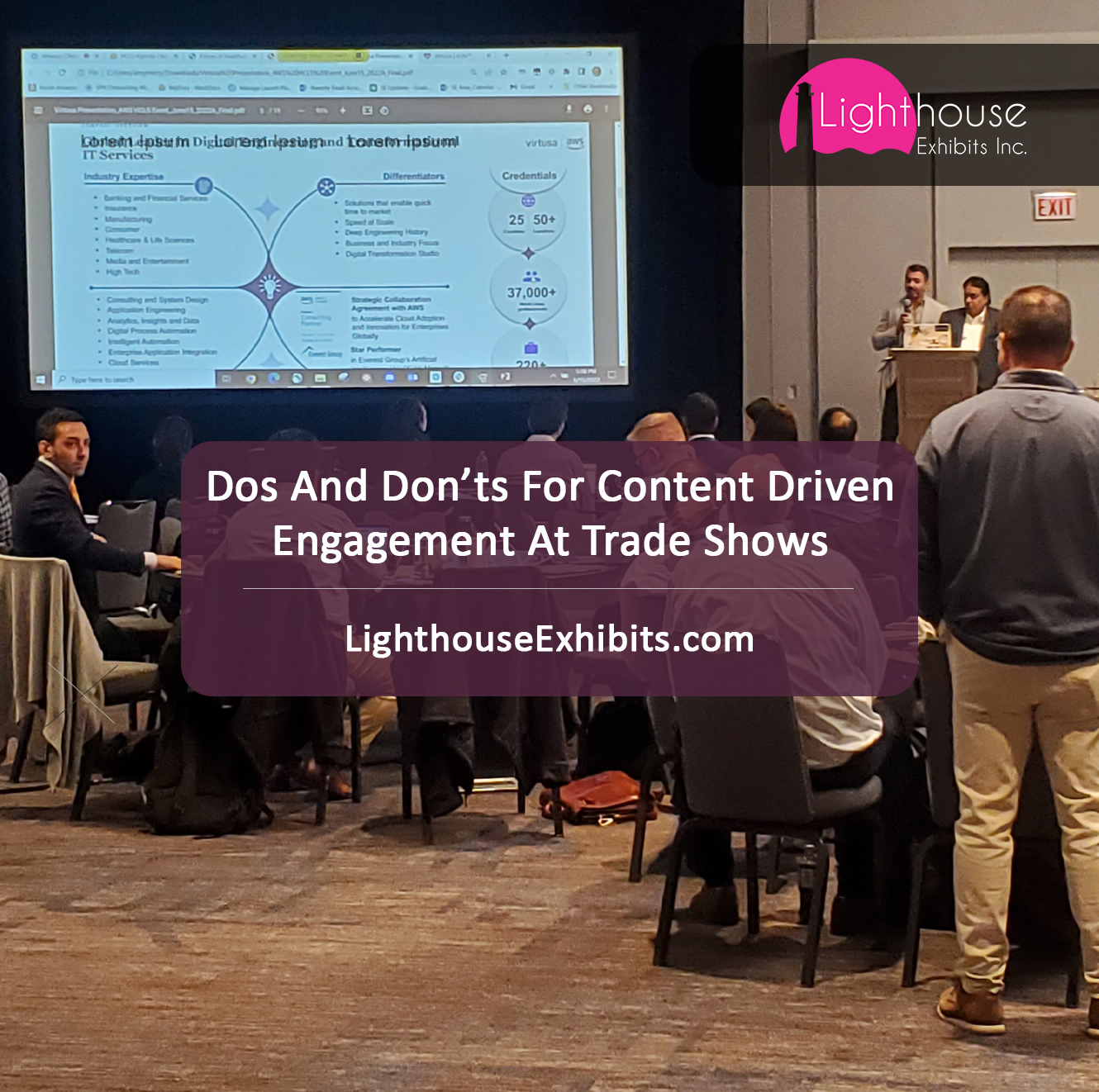Dos And Don’ts For Content Driven Engagement At Trade Shows

Brand storytelling is a way for trade show attendees to feel connected to your personality, your message, and your mission. Telling your story is done through content engagement, as you set the stage and walk attendees through just what your brand is all about. There are, however, right and wrong ways to go about content driven engagement and approaching your content incorrectly can leave your story lost in translation. What you’re left with is wasted effort and a message that fails to land.
Important Dos Of Content Driven Engagement
A list of “do’s” is made up of what you want to aim for when it comes to your content engagement. These are the approaches you can take to ensure your story isn’t just heard – it’s felt. Some of these important do’s of content driven engagement include:
• Use your visuals to demand attention – Your visuals are going to be high impact attention-grabbers when it comes to content driven engagement. High quality videos, well-produced animations, and pictures that demand attention are key.
• Interactive elements draw them in – One of the most important parts of content driven engagement is just that – engagement. Interactive elements like games, virtual reality, augmented reality, or touchscreens don’t just tell the story, they bring your attendees into it.
• Live storytelling makes your story human – While doing demonstrations or speeches, bring a little life into your story with live storytelling. It brings a human element to your content and makes it natural for attendees to connect.
• Offer follow-up content – Follow up content ensures your story remains memorable. QR codes, e-mail follow up, and downloadable resources encourage attendees to take a piece of your story home with them.
Important Don’ts Of Content Driven Engagement
For every right way, there’s always a wrong way. A few things you want to avoid when it comes to content driven engagement are:
• Don’t overload attendees – While your story should be thorough, it should also be concise, easy to follow, and easy to engage with. Avoid information overload that takes away from your message.
• Don’t be impersonal – While it is your story you’re telling, it’s always important to consider the audience as well. A generic story isn’t going to be as impactful as one that attendees can connect with personally. Tell your own story, speak to the audience, and make the experience as personal as possible.
• Remember to engage – All too often brands forget about the engagement part of content driven engagement and storytelling. Give your attendees a way to engage and encourage them to immerse themselves in your brand identity.
For more on engaging your audience with your story, contact Lighthouse Exhibits.

